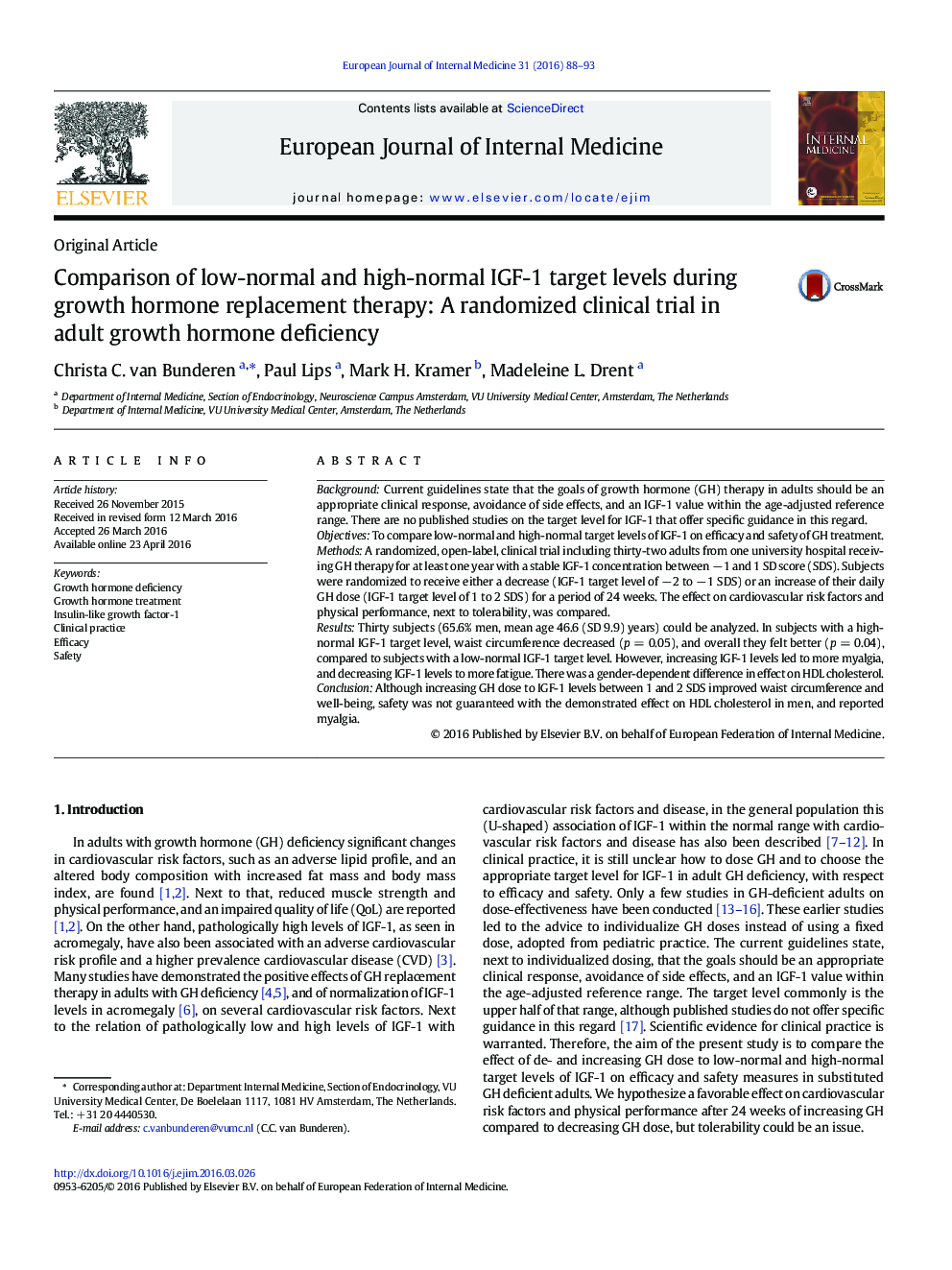| Article ID | Journal | Published Year | Pages | File Type |
|---|---|---|---|---|
| 3465877 | European Journal of Internal Medicine | 2016 | 6 Pages |
•Increasing IGF-1 level leads to a decrease in waist circumference, mostly in women.•In men, increasing IGF-1 level leads to a decrease in HDL cholesterol.•Increasing IGF-1 level leads to more myalgia, and decreasing levels lead to more fatigue.•An individualized IGF-1 target level during GH replacement therapy seems advisable.
BackgroundCurrent guidelines state that the goals of growth hormone (GH) therapy in adults should be an appropriate clinical response, avoidance of side effects, and an IGF-1 value within the age-adjusted reference range. There are no published studies on the target level for IGF-1 that offer specific guidance in this regard.ObjectivesTo compare low-normal and high-normal target levels of IGF-1 on efficacy and safety of GH treatment.MethodsA randomized, open-label, clinical trial including thirty-two adults from one university hospital receiving GH therapy for at least one year with a stable IGF-1 concentration between − 1 and 1 SD score (SDS). Subjects were randomized to receive either a decrease (IGF-1 target level of − 2 to − 1 SDS) or an increase of their daily GH dose (IGF-1 target level of 1 to 2 SDS) for a period of 24 weeks. The effect on cardiovascular risk factors and physical performance, next to tolerability, was compared.ResultsThirty subjects (65.6% men, mean age 46.6 (SD 9.9) years) could be analyzed. In subjects with a high-normal IGF-1 target level, waist circumference decreased (p = 0.05), and overall they felt better (p = 0.04), compared to subjects with a low-normal IGF-1 target level. However, increasing IGF-1 levels led to more myalgia, and decreasing IGF-1 levels to more fatigue. There was a gender-dependent difference in effect on HDL cholesterol.ConclusionAlthough increasing GH dose to IGF-1 levels between 1 and 2 SDS improved waist circumference and well-being, safety was not guaranteed with the demonstrated effect on HDL cholesterol in men, and reported myalgia.
